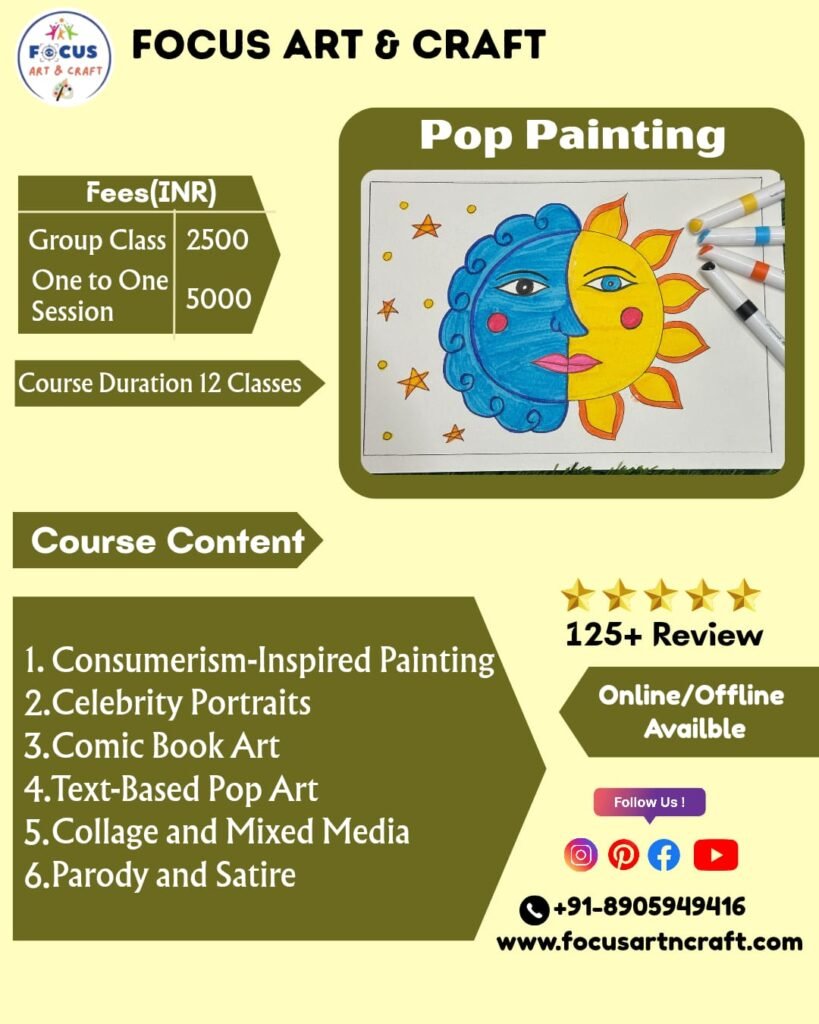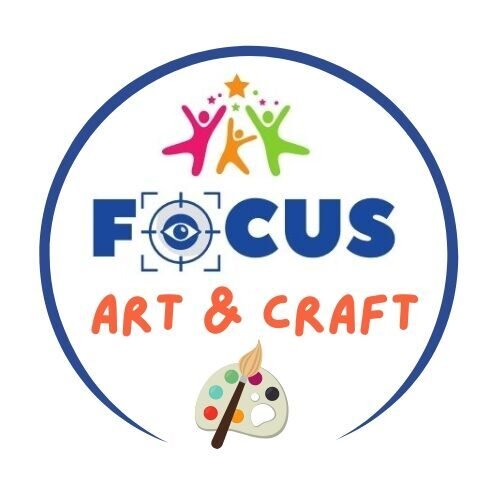
Pop Painting
Pop art painting is a style within the Pop Art movement that emerged in the mid-20th century, characterized by vibrant colors, bold imagery, and inspiration from popular culture. It incorporates elements from advertisements, comics, and consumer goods, often blending fine art with mass media aesthetics. Pop painting critiques or celebrates modern consumerism and cultural icons.
Course Content:
- Introduction
- Pop Art on MDF Box
- Pop Art on Chopping Board
- Pop Art on Cloth Bag
- Pop Art on Kettle
- Pop Art on Frame
- Pop Art on Canvas
Top 6 Types of Pop Art Painting:
1. Consumerism-Inspired Painting: Focused on everyday objects and brand imagery (e.g., Andy Warhol’s Campbell’s soup cans).
2. Celebrity Portraits: Depicting icons from film, music, and pop culture (e.g., Warhol’s Marilyn Monroe).
3. Comic Book Art: Featuring imagery influenced by comic strips and graphic novels (e.g., Roy Lichtenstein’s works).
4. Text-Based Pop Art: Using bold typography, slogans, or logos as central elements.
5. Collage and Mixed Media: Combining painting with photography, newspaper clippings, or ads.
6. Parody and Satire: Using pop imagery to critique societal issues or trends.
Art Material Required forPop Art Painting
1. Acrylic Paint: Used for its vibrant colors and quick-drying properties.
2. Oil Paint: For rich textures and smooth blending.
3. Enamel Paint: Popular for its glossy, industrial look.
4. Silkscreen Printing: Frequently used by artists like Andy Warhol to mass-produce images.
5. Collage Elements: Incorporating magazines, newspapers, or advertisements.
6. Canvas or Board: As the primary surface for painting.
7. Spray Paint: For bold, graphic effects and stencils.
8. Markers and Pens: For detailed outlines or text elements
Top 5 Best Benefits of Pop Art Painting
1. Accessible to All Audiences: Pop Art uses everyday imagery and vibrant visuals, making it relatable and easy to understand for people of all backgrounds, bridging the gap between fine art and popular culture.
2. Celebration of Ordinary Life: It transforms mundane objects and consumer goods into captivating art, encouraging viewers to see beauty and significance in the everyday world.
3. Promotes Creative Freedom: By breaking traditional art norms, Pop Art allows artists to experiment with unconventional materials, bold colors, and mixed media techniques, fostering innovation.
4. Cultural Reflection and Commentary: Pop Art mirrors societal trends, consumerism, and media influence, serving as a visual time capsule of contemporary life and encouraging critical thinking.
5. Inspiration for Other Industries: Pop Art has profoundly influenced fashion, graphic design, advertising, and interior decor, bringing bold, playful aesthetics to mainstream creative industries
